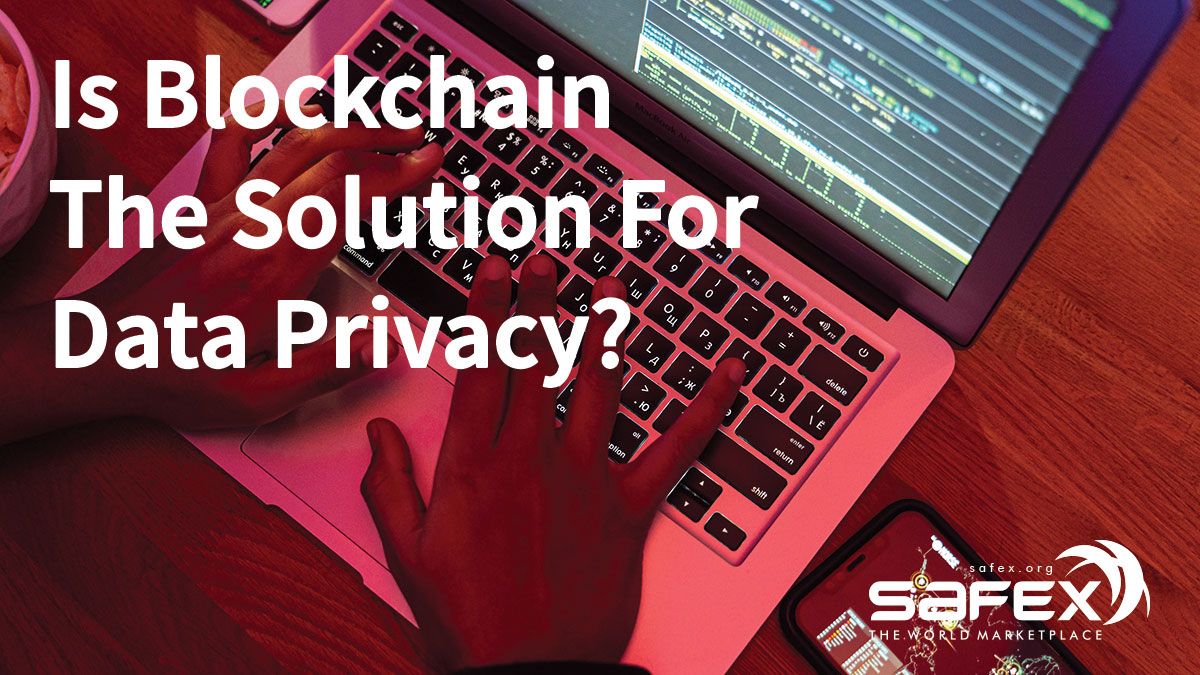Blockchain Technology: The Solution for Data Privacy?
The preservation of data privacy has become one of the key challenges in our digital age. The application of blockchain technology is capable of solving existing issues regarding this matter by eliminating the requirement of trusted third parties and bringing the power back into people's hands.

The preservation of data privacy has become one of the key challenges within our digital age. The application of blockchain technology might be capable of solving existing issues regarding this matter. It can eliminate the requirement of trusted third parties and bring the power back to people managing data themselves.
Introduction
Blockchain technology has been in the spotlight for a long time with new implementations stretching across multiple industries. We have all witnessed how much implementing blockchain technology for eCommerce has proven to be a great way for this industry to improve and reach a wider market. Governments, large corporations, and startup projects have also shown that blockchain can play a significant role - beyond the use as decentralized cryptocurrency - in industries like manufacturing or investing.
With multiple data breaches over the past couple of years, data security has certainly been one of the modern age's main challenges. Both users and legislators raised their concerns and started questioning how businesses should be treating the data they are entrusted with. This has led to new compliance requirements that address privacy and data collection. Now, businesses are going one step further and recognize that the application of blockchain technology might solve existent issues regarding data privacy since this technology offers a true sense of moving trust away from third parties.
What is blockchain technology?
Blockchain is a decentralized technology that functions as a distributed ledger which is shared across multiple servers and devices around the world. Entries into that ledger can be made either publicly visible or encrypted. All the data recorded is stored in a distributed fashion. This way, the single point of entry - the central data repository that hackers usually target - is eliminated. Breaking into an individual block in an attempt to steal information or altering a string of recorded data is virtually impossible. Due to the working mechanisms of this technology, the altered version of the ledger would be rejected by the other participants in the network and therefore be invalid. It goes to show that this approach indeed has the technological characteristics necessary to ensure better data security and we can expect blockchain and data privacy to become inseparable in the near future.
Blockchain technology provides a new type of storage for virtual assets such as legal documents, healthcare records, payment or identity information. These data entries can not be extracted or moved in any way without the owners' technologically granted explicit permission after they have been entered into the ledger. However, the secure exchange of records protected in this way is very simple. Users can interact via smart contracts built on a blockchain which ensure that certain validations and transactions are executed whenever certain conditions are met. The two parties only need to exchange their keys that allow accessing and reviewing that information.
No single attack vector
Due to the nature of the distributed ledger technology, added entries are immutable. This eliminates the risk of a centralized server being hacked and data altered, deleted or stolen. The application of this technology offers a higher level of security as every new data entry is confirmed by multiple nodes in the network.
However, this technology is still fairly young and the code of used smart contracts and encryption methods should be diligently audited in detail before using it for sensitive data and applications in order to avoid any harmful exploits. In case this requirement is met, data stored on a blockchain with many different participants - miners/stakers and node operators - can be considered to be strongly backed.
Privacy protection by returning identity data to citizens
The digital era we live in brings symbiosis between people and technology. This provides for more personal data and raises the important question about our personal identities in a digital world. Digital identity is the total sum of all the attributes that exist about us in this world - a constantly growing and evolving collection of data points.
The World Economic Forum concluded that an excellent digital identity should put the power over privacy back in users’ hands. They also stated that it should be inclusive, useful and secure for all, as well as interoperable, user-centered and decentralized.
What does the decentralization of identity management mean?
The decentralization of identity management returns power to the hands of users giving them control over their own identity and privacy. This method is a more secure solution compared to relying on centralized identity providers such as authorization services or password and key management systems. Large companies, such as Microsoft and IBM among others, have already discussed decentralized models in terms of potential digital identification systems. However, many privacy and data protection issues have yet to be solved via blockchain technology. There are many concerns that raise the question of whether or not the universal deployment of decentralized identity management can be the key to online data privacy. For this to work, certain standards would need to be set in order to establish an interoperable way to access these identities.
Financial transactions
Most people rely on third-party services like PayPal to complete a payment when transferring money online. Blockchain technology can altogether eliminate the need for third parties acting as middlemen and taking their share when processing a transaction. This technology can provide increased security regarding to the financial data involved. People can make payments using their public and private keys in a peer-to-peer fashion without having to provide their personal data to a third party. Cryptographic functions allow people to send money to other users as well as do online shopping with cryptocurrency.
Healthcare data
More than 100 million health care records have been breached in recent years. Since health providers often send data to other health providers, this may lead to the mishandling of data, losing of records or passing on of inaccurate or old data. Blockchain offers better control to patients over their healthcare data. Rather than having both physical and electronic copies of records, blockchains could spark the shift to electronic health records altogether. People can store the data on a ledger and rest assured that their personal info is safe and only accessible to the required authorities. Furthermore, patients can decide to release only a particular part of the information to the healthcare provider for the purposes needed.
Legal documents
Today, documents need to be verified through a third party or a notary which can result in high fees. Adopting blockchain technology for storing legal documents would ensure that information is protected from theft and mishandling. Blockchain prevents tampering and provides easy access to those who are granted permission. The technology could also be used for the execution of legal contracts using smart contracts in which transactions are automatically executed aligning with the terms of such a contract. This way, users would no longer have to rely on a third party to manage contracts, which would provide an increase in the privacy of personal data.
Potential mitigating steps
Many organizations have called for legislative updates or guidance from relevant authorities in an effort to reconcile data privacy laws with emerging decentralized technologies such as blockchain. Currently, organizations need to follow several risk management strategies when considering blockchain technology. These strategies include the following ones:
- Carefully evaluating whether using blockchain technology is a good fit for current business and processing objectives
- Preferring private or permissioned blockchains to enforce stricter usage rules
- Using data structure and design techniques to limit the personal data stored on blockchains
- Adopting alternative data encryption and destruction techniques to protect personal data
Final thoughts
Most technologists agree that blockchain technology and data privacy go hand to hand. With its data transparency and integrity features, blockchain technology offers unique possibilities to improve data privacy which include:
- Verifying and managing consent
- Providing individuals with clear notifications and records of their personal data being used across distributed systems
- Minimizing data sharing between data controllers and their processors
Some researchers take this concept even further and envision a future where self-governing blockchain-enabled identity and data management solutions serve as a way to maintain and demonstrate data privacy.
Read more about data privacy on our blog.
